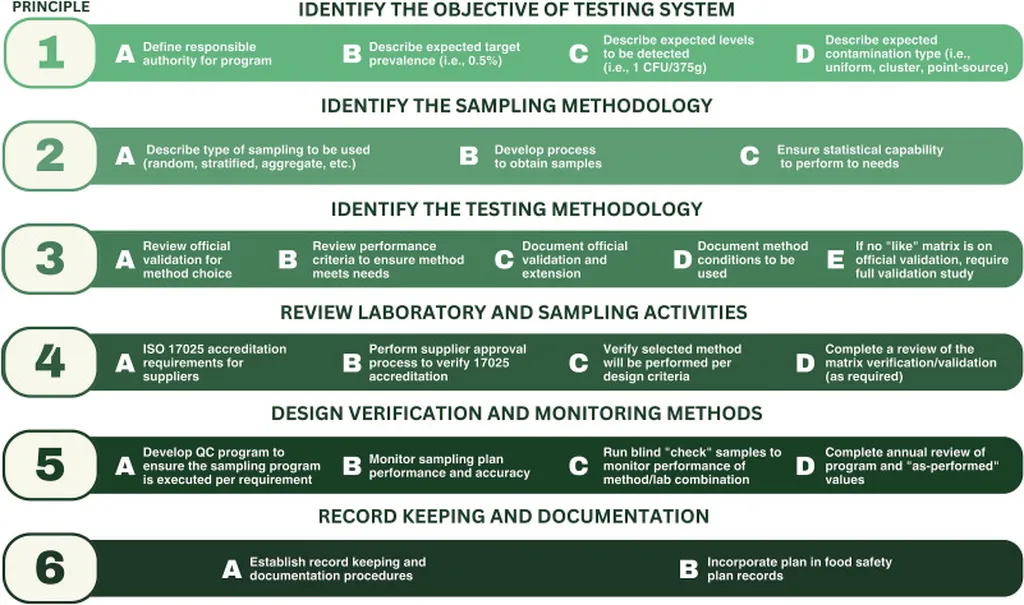In the ever-evolving landscape of food safety, a recent study published in the *Journal of Food Protection* is making waves, offering a fresh perspective on how we approach microbial testing and decision-making. The research, led by Robert L. Buchanan from the Department of Nutrition and Food Science at the University of Maryland College Park, delves into the concept of Testing Program Critical Control Points (TP-CCP), a novel approach that could significantly enhance food safety protocols and, by extension, the agricultural sector’s bottom line.
The study, titled “Testing Program Critical Control Points (TP-CCP): Characterizing and Optimizing Decision-making Power in Food Safety Testing,” introduces a framework that aims to optimize the decision-making power of microbial testing. This is particularly relevant in the context of the Food Safety Modernization Act (FSMA), which has shifted the focus from responding to contamination to preventing it. The Hazard Analysis and Critical Control Points (HACCP) and Hazard Analysis and Risk-Based Preventive Controls (HARPC) systems are at the heart of this preventive approach, and the TP-CCP framework seeks to bolster these systems by making microbial testing more strategic and effective.
Buchanan and his team argue that not all testing is created equal. “The timing, frequency, and type of testing can greatly influence the decision-making power,” Buchanan explains. “By identifying and optimizing these factors, we can enhance our ability to prevent foodborne illnesses and reduce the economic impact of recalls and contamination events.”
The commercial implications for the agriculture sector are substantial. Foodborne illness outbreaks and recalls can lead to significant financial losses, not to mention damage to a company’s reputation. By adopting the TP-CCP framework, agricultural businesses can potentially reduce these risks, leading to safer products and more stable markets. Moreover, the framework could help streamline testing processes, reducing costs and improving efficiency.
The study also touches on the use of microbiological criteria and Quantitative Microbial Risk Assessment (QMRA), highlighting their role in the TP-CCP framework. These tools can provide valuable data to inform testing strategies, further enhancing decision-making power.
So, how might this research shape future developments in the field? The TP-CCP framework could pave the way for more sophisticated and strategic approaches to food safety testing. It could also foster a greater integration of data-driven decision-making in the agricultural sector, leading to safer food products and more resilient supply chains.
As the food industry continues to grapple with the challenges of ensuring safety and quality, research like this offers a beacon of hope. It underscores the power of innovation and the potential of data-driven approaches to transform the way we approach food safety. With the TP-CCP framework, we may be on the cusp of a new era in food safety, one that is more proactive, more strategic, and ultimately, safer for consumers and more profitable for businesses.

